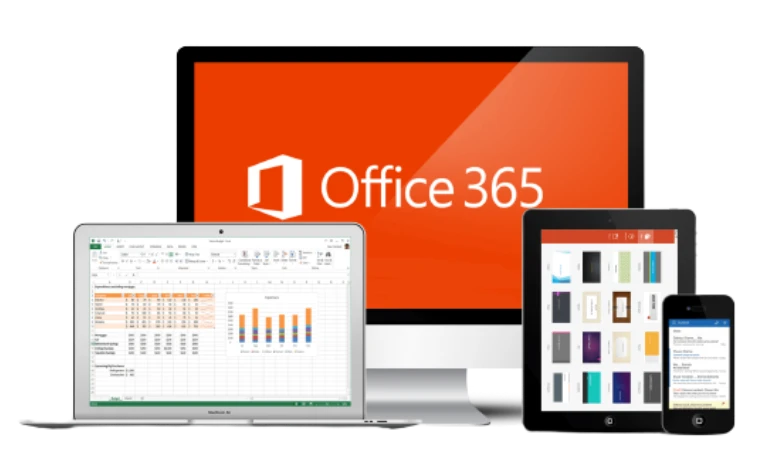
How to Select the Best Microsoft 365 Plan for Your Requirements
Microsoft 365 is a cloud-based subscription service that provides a suite of productivity tools and applications to help businesses and individuals work more efficiently. With several different plans available; it’s important to choose the right Microsoft 365 plan that meets your specific needs. Choosing the right plan can help you maximize productivity and save time and money. In this blog, we’ll take a closer look at the different Microsoft 365 plans available; how to assess your needs, and tips for a smooth migration and deployment. By the end of this blog; you’ll have a better understanding of how to choose the right Microsoft 365 plan for your individual needs.
Understanding Microsoft 365 Plans
Microsoft 365 offers a range of plans that cater to different needs and budgets. The plans vary in terms of the features and applications included, the number of users allowed, and the level of security and compliance offered.
The most common plans include Microsoft 365 Business, Enterprise, and Education plans. The Business plans are designed for small to medium-sized businesses; while Enterprise plans are geared towards larger organizations with more advanced security and compliance requirements. Education plans are tailored for educational institutions, providing access to educational tools and applications.
Each plan has its own set of features; including access to popular applications such as Microsoft Word, Excel, PowerPoint, and Outlook. Additionally, some plans include other tools such as Microsoft Teams, SharePoint, OneDrive for Business, and Yammer.
When it comes to pricing and subscription options; Microsoft 365 offers a monthly or annual subscription plan, with the latter being more cost-effective. The subscription fees vary depending on the plan and the number of users. The Business and Enterprise plans also offer different levels of support, with Enterprise plans offering more advanced support options. Understanding the features, differences, and pricing options of each Microsoft 365 plan can assist you in making an informed decision when selecting the best plan for you.
Assessing Your Needs
When choosing a Microsoft 365 plan, it’s important to assess your specific needs and requirements. Consider the following factors:
- Size of your organization: The number of users you have an impact the plan you choose. Small businesses may require fewer features and applications compared to larger organizations.
- Security and compliance: Depending on the type of data and information your organization handles, you may require a higher level of security and compliance offered by the Enterprise plans.
- Budget: Your budget can determine which plan you can afford, and whether you opt for a monthly or annual subscription.
- Applications and features: Depending on your specific needs, you may require access to certain applications and features offered by specific plans.
- Personal requirements: If you’re using Microsoft 365 for personal use, you may require a plan that provides access to specific applications such as Microsoft Outlook, Word, or Excel.
By identifying your specific needs, you can determine the most appropriate plan for your organization or personal requirements. This can help you maximize the value and benefits of Microsoft 365 while staying within your budget. Additionally, determining the number of users required can help you choose the most cost-effective plan and avoid unnecessary expenses.
Choosing the Right Microsoft 365 Plan
Once you’ve assessed your needs and requirements, it’s time to choose the right Microsoft 365 plan. Here’s how to do it:
- Comparison of Microsoft 365 Plans: The first step is to compare the features, applications, and pricing of each plan. Microsoft provides a detailed comparison chart on their website that can help you identify the differences between plans.
- Analysis of which plan best suits individual needs: Once you have compared the plans, you need to analyze which plan best suits your specific needs. Consider the applications and features you require, the level of security and compliance you need, and the number of users you have.
- Choosing between a monthly or annual subscription: Microsoft 365 plans offer both monthly and annual subscription options. Consider your budget and whether a monthly or annual subscription is more cost-effective for your organization.
It’s important to remember that choosing the right Microsoft 365 plan can have a significant impact on your organization’s productivity and efficiency. Take the time to carefully assess your needs and compare the different plans before making a decision. If you’re unsure which plan is right for you, consider consulting with a Microsoft partner or expert who can provide guidance and support. By choosing the right plan, you can maximize the benefits of Microsoft 365 and achieve optimal results.

Deployment and Migration
Once you’ve chosen the right Microsoft 365 plan; the next step is to migrate your data and applications to the new platform. Here’s what you need to know about the deployment and migration process:
Explanation of the Migration Process: The migration process involves moving your data and applications from your current platform to Microsoft 365. This can involve transferring files, emails, contacts, and other data. Depending on the complexity of your migration, you may need to enlist the help of an IT professional or Microsoft partner.
Tips for a Smooth Deployment: To ensure a smooth deployment, it’s important to plan ahead and communicate with your team. Some tips to keep in mind include:
- Schedule the migration during a low-traffic period to minimize disruption
- Backup your data before the migration
- Ensure all users have the necessary credentials to access Microsoft 365
- Communicate with your team about the migration process, including any changes or updates to applications and workflows
- Conduct user training and support to ensure a smooth transition
Support and Resources Available: Microsoft offers a range of support and resources to help with the migration and deployment process. This includes online tutorials, documentation, and technical support. Additionally, Microsoft partners and certified professionals can provide guidance and support throughout the process.
By following these tips and utilizing the available resources and support, you can ensure a smooth and successful migration and deployment to Microsoft 365.
Conclusion
In conclusion, choosing the right Microsoft 365 plan is crucial to achieving optimal results and productivity for your organization. Here’s a summary of the key points to keep in mind:
- Microsoft 365 is a powerful platform that offers a range of applications and features to enhance your business or personal productivity.
- Understanding the different Microsoft 365 plans, their features, and pricing options is important when choosing the right plan.
- Assessing your needs and requirements, including the number of users and level of security and compliance needed, is critical to selecting the best plan for your organization.
- Once you have chosen the right plan, the migration and deployment process should be carefully planned and executed for a smooth transition.
- It’s important to utilize the available support and resources, such as Microsoft partners and technical support, to ensure a successful migration and deployment.
By following these steps and choosing the right Microsoft 365 plan, you can unlock the full potential of this powerful platform and achieve optimal results. Don’t hesitate to take action and choose the right plan for your organization today.


